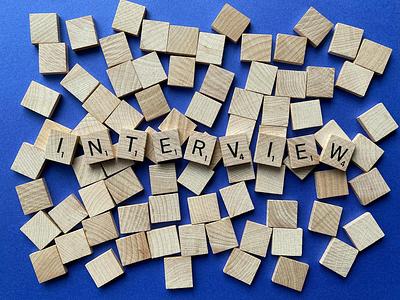Looking for all Articles by Rebecca Smith?
The art of interviewing: tips for non-fiction, fiction and other writing
Author and journalist Rebecca Smith shares some of her top tips for getting a good interview.

Whatever kind of writing you do – nonfiction, fiction, life writing – the art of interviewing is a good one to know. But, as with anything in life, there are more ways to do it than one!
Depending on what you are writing and what you want to achieve, usually the key to a successful interview boils down to finding the right person.
So how do you find them and how do you interview them? It’s a mixture of research, technique and often just pure luck.
Deciding who to interview
If you have someone in mind, research them as much as you can; read articles, old interviews, podcasts.
Contact them, telling them why you are in touch and whether you could have a conversation. At this point, you are just finding out if they are suitable. Speak via phone (or online) and make notes. If they are what you are looking for, suggest meeting up.
OR, wing it! This works particularly well if you are writing about a place. Sometimes boots on the ground is the best way forward. Turn up and be brave. Ask questions in the café, in the post office or to the guy sitting on the bench. You never know who you might find.
Working out where your interview will take place
If arranging a conversation, an ‘in situ’ one is always good for colour and texture for the piece. Choose somewhere interesting and relevant to the interview which can create more discussion and even become part of it.
You could walk you around their place of work, their garden, or you could choose a neutral place where you can both focus. Moving while talking is different to sitting opposite someone; work out what works best for your writing.
Picking a good when
The ‘when’ can become part of the interview too. An interview pre-Christmas will be very different to one at mid-summer. A conversation post work will be different to a conversation at weekend. How does the time of day and time of year fit into the narrative of your piece as a whole?
Practical tip: leave at least two hours in your diary for it. They might only talk for a short time, or they might want to give you lots of information. Give yourself, and them, time.
Consider how you’ll conduct your interview
Record it. You can use the voice notes or a similar app on your phone – it doesn’t need to be broadcast quality. By recording it, you will also capture the background noise, which you might not notice at the time but which adds extra colour in your writing afterwards. Make sure you tell them you are recording it.
The main thing you need to do during the interview is LISTEN. This is harder said than done. Listen to their answers whilst thinking about what to ask next. Listen to their tone – are they uncomfortable about this part of the conversation, are they starting to go off topic? Be aware, if they leave information out, it might be on purpose.
Take photos. It is easy to forget what you saw and photos are a good reference point when writing up afterwards.
What to do post-interview
Transcribe the piece as soon as you can, making notes as you go (‘the sun was hot at this point, crossbills flew over.’)
Then write it up. You might only use a few sentences, you might use the whole conversation. It’s your job to mould it and shape it into the piece you want.
Personally, I send the piece to the interviewee to check they are happy with it, both factually and emotionally. Some people send bullet points, some only send quotes they have used. Some get signed permission forms, some use a gentleman’s agreement. Do whatever works for you, individually.